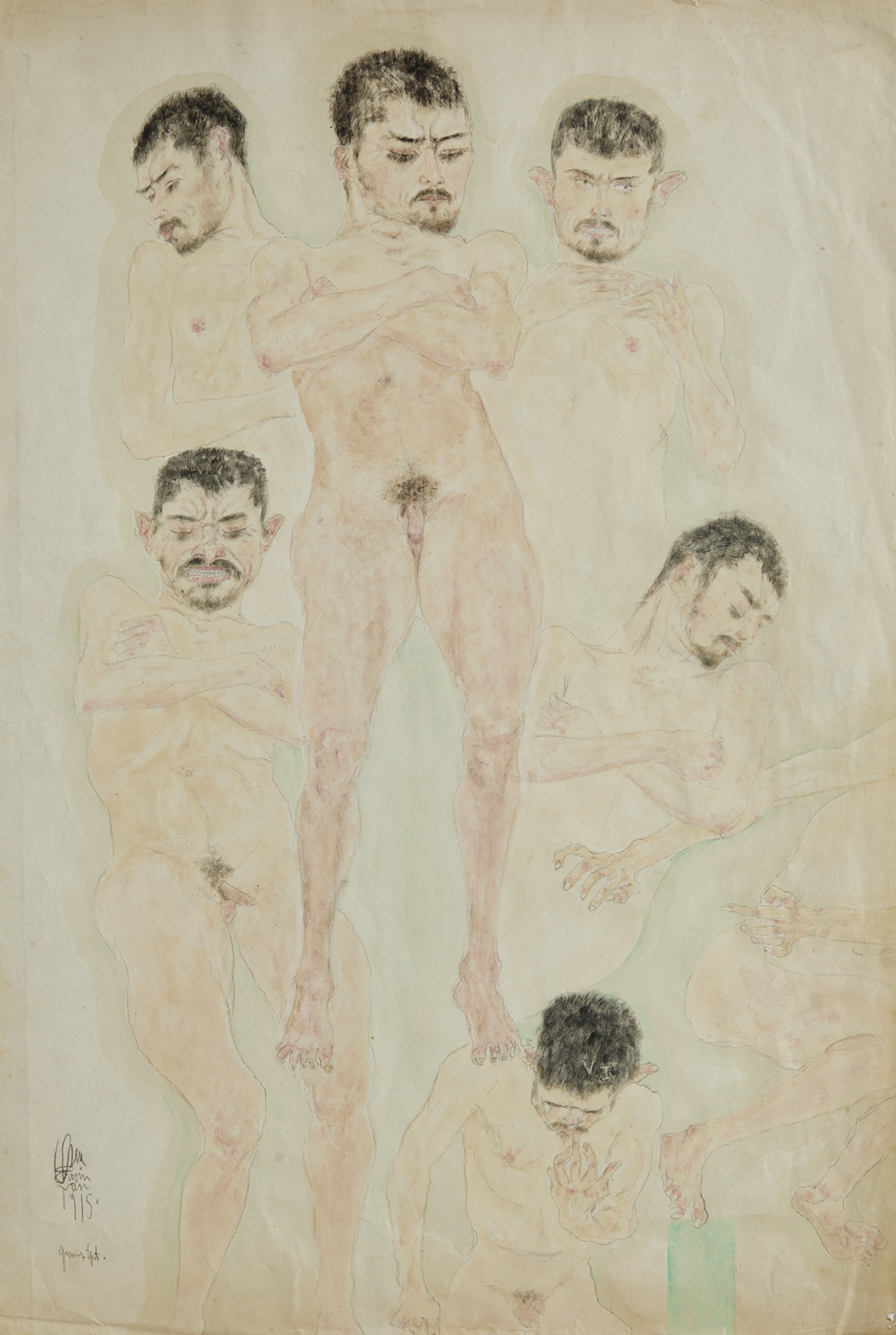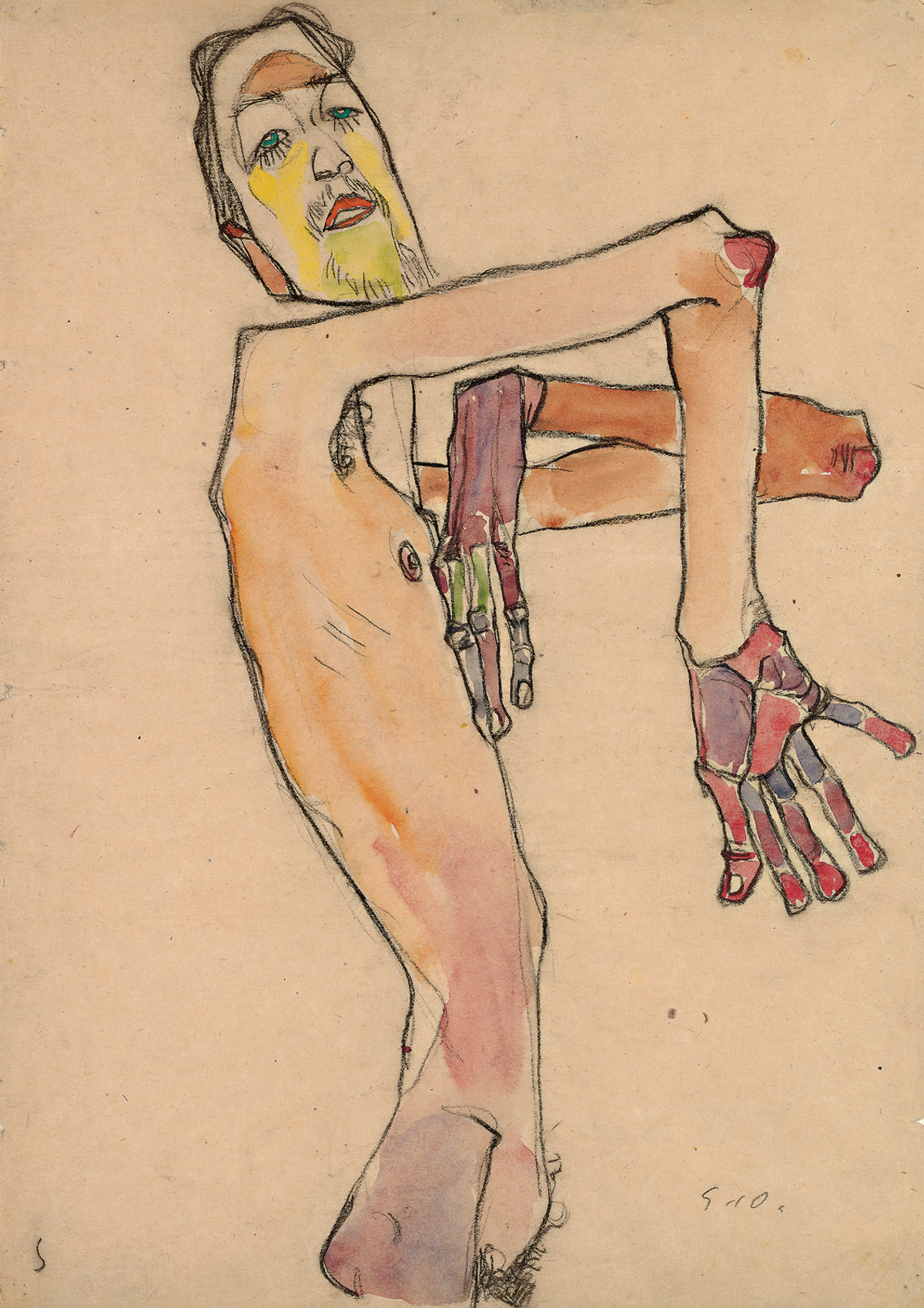A gaunt man with crooked limbs turns towards us, rosy lips parted, emerald eyes fringed with lashes. Beneath his scrubby facial hair, his cheeks and chin are stained a lemon yellow. His hands look raw, like they have been peeled; two fingers have turned a mouldy green, as if fighting infection. He is Erwin Osen, companion and model to the Austrian Expressionist Egon Schiele, who created this work in 1910. In fact, Osen was an artist too, and a tightly focused exhibition at the Leopold Museum in Vienna aims to explore their shared fascination with the body through the lens of clinical medicine.

Erwin Osen's portraits of a patient made in 1915 © Leopold Museum, Wien, Foto: Leopold Museum, Wien/Manfred Thumberger
At the turn of the 20th century, Vienna was considered the capital of medical science based on the empirical examination of human anatomy. It attracted avant-garde physicians who were often interested in commissioning and collecting the work of avant-garde artists. One such physician was Stefan Jellinek, who specialised in electrotherapy and headed the neurology department of a hospital where Osen was treated in spring 1915. During his time there, Osen made portraits of his fellow patients, and a series of those drawings—which Jellinek brought with him to the UK in 1939, and which have just recently been discovered in his attic—have been bought by the Leopold Museum and form the beating heart of The Body Electric exhibition.

Egon Schiele's Lying Newborn (1910) © Leopold Museum, Vienna/Manfred Thumberger
“Vienna is said to have been the capital of the soul, of Freud and the unconscious, but it was also the capital of the body,” says Verena Gamper, who has curated the exhibition together with Gemma Blackshaw. Osen’s psychologically and physically astute works on paper are presented alongside portraits that a general practitioner commissioned him to make in a psychiatric hospital two years earlier, and vibrant images of pregnant women and freshly born babies that Schiele made with the support of a gynaecologist in 1910. As with Schiele’s striking portrait of Osen, throughout, the human body is the focus—charged, like Osen, from bony elbows to ruddy fingertips.
• The Body Electric: Erwin Osen, Egon Schiele, Leopold Museum, Vienna, 16 April-26 September


